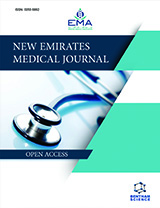Abstract
Background: The diagnosis of viral causes for flu-like syndromes have positively been impacted by the availability of molecular assays. In recent years, syndromic multiplex panels have been able to give rapid turn-around-times and highly accurate results. We examine the use of this test during the first four months of 2020 during the COVID-19 pandemic.
Methods: A retrospective review of 2145 patient results from a multiplex syndromic flu panel using Biofire RP2 was performed. Cases in which parallel testing for COVID-19 by real-time polymerase chain reaction (RT-PCR) was compared.
Results: 53% of the patients tested identified as a viral agent. 13% of the positive cases were coinfection with more than a single virus. The most frequently detected virus(es) were rhinovirus/enterovirus, followed by coronaviruses (non-MERS, non-COVID-19). One hundred patients had simultaneous testing for COVID-19. Seventeen (17%) had positive COVID-19 by RT-PCR. Three of these patients had coinfection with rhinovirus/enterovirus and COVID-19. The negative predictive value for COVID-19 based on a positive non-COVID agent was 95% in our sample.
Conclusion: Viral syndromic panels are useful for the rapid detection and appropriate treatment of patients. Our results suggest coinfection is infrequent, and we discuss the impact of COVID-19 on patient testing strategy. The use of multiplex panels is useful to provide accurate diagnosis and rule out important pathogens that have different treatment approaches.
[http://dx.doi.org/10.1128/JCM.02787-13] [PMID: 24131685]
[http://dx.doi.org/10.1128/JCM.03368-12] [PMID: 23486707]
[http://dx.doi.org/10.1128/JCM.01516-15] [PMID: 26378282]
[http://dx.doi.org/10.46234/ccdcw2020.017]
[http://dx.doi.org/10.1016/S0140-6736(20)30211-7] [PMID: 32007143]
[http://dx.doi.org/10.1016/S0140-6736(20)30183-5] [PMID: 31986264]
[http://dx.doi.org/10.1056/NEJMoa2002032]
[http://dx.doi.org/10.1038/s41586-020-2008-3] [PMID: 32015508]
[http://dx.doi.org/10.1155/2017/1928795] [PMID: 29359144]
[http://dx.doi.org/10.1371/journal.pone.0155589] [PMID: 27196110]
[http://dx.doi.org/10.1017/S0950268814000302] [PMID: 24568719]
[http://dx.doi.org/10.3889/oamjms.2018.332] [PMID: 30337970]
[http://dx.doi.org/10.1001/jama.2020.6266] [PMID: 32293646]
[http://dx.doi.org/10.1101/2020.02.29.20027698]
[http://dx.doi.org/10.3201/eid2606.200299] [PMID: 32160148]
[http://dx.doi.org/10.1111/jdv.16387] [PMID: 32215952]
[http://dx.doi.org/10.1136/gutjnl-2020-321013] [PMID: 32241899]
[http://dx.doi.org/10.1038/s41585-020-0319-7] [PMID: 32313110]































